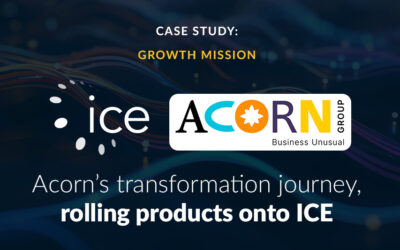Thinking of buying or recently purchased a new car? If so, then no doubt you will have done your homework. All the basic research and investigation to ensure that you end up with the right vehicle to suit your needs for the foreseeable future.
Research – Obviously you will want to research your shortlist of vehicles, comparing one against the other using motoring magazine reviews and existing owner reviews. You don’t just want to rely on the glossy brochures and advertising!
Budget – A key element! Yes, you could afford that luxury model you always wanted, albeit second hand. But can you afford the running costs? Servicing, repairs, insurance, fuel…
Servicing – Where is your local garage? How often are services required? How many weeks in advance do you need to book? What happens when you are without your car – is a courtesy car provided?
Equipment – What comes as standard? In the showroom you will no doubt be shown a top of the range model with every conceivable extra. Once you have selected your model, how much cash will you need to tailor the vehicle configuration to your exact requirements? Air con, cruise control, heated seats, metallic paint, DAB radio, Bluetooth, etc.
Test Drive – A new vehicle can feel wonderful on a short test drive. 20 mins behind the wheel, just you and the sales person, accelerating hard, braking hard, the odd fast corner. Do you really need to try every switch and button to make sure they work? After all you are in the demonstration vehicle, not the vehicle that will be delivered to you.
Try before you buy – So this is where it gets interesting. Big ticks in the box for all the previous steps but what is the car like in real life. I’m not talking about a short weekend loan, I’m talking at least a week living with the car. Commuting, shopping, pleasure drives. Loading the family, the dog, parking, real fuel consumption, driving at different speeds on different surfaces. Does this car really meet all your needs?
Aftersales – So you have taken the plunge! You have purchased your vehicle and its sitting on the driveway looking all nice and shiny. But what if something isn’t right? What if something goes wrong? How good is the aftersales service? Can issues be rectified quickly and easily with a minimum of fuss or has the sales person moved on to the next customer, leaving you to negotiate with the servicing department to rectify any faults.
Should replacing your Policy or Claims platform be any different? The answer is “No”. The principals remain the same. Let’s take the same headings and apply these to a system replacement process:
Research – Research is key. What do the industry analysts, such as Celent, say about your chosen shortlist of suppliers? Have their customers rated the software supplier? How do these compare against each supplier? What do the suppliers customer base have to say? Would they buy again or are they already repeat customers? Most importantly, don’t let your supplier choose which of their customers can supply a reference – you are the prospective client – you choose one or more references from their customer base. If the supplier is as good as they say they are then it shouldn’t be an issue.
Budget – You have a budget, it’s one of the first things you will be asked in the sales process. We all know budgets can flex, but that flex needs to be minimal not monumental. Pick a supplier with a track record of delivering on time and on budget. Don’t take the suppliers word for it – ask their customer base. It is very easy for some suppliers to agree a budget with you and inflate costs due to “unforeseen” over running of the project or “unbudgeted” development.
Servicing – How often will you need to use the services of your supplier to make changes? All too often we hear stories of software houses delivering a solution and then charging extortionate amounts to make changes to the application. Changes should be within your own control. If you wish to pay the supplier to make changes on your behalf that is fine, but it should be a choice not a prerequisite. Make sure you understand the terminology involved – “Configurable” should mean changes effected by a Business Analyst or similar, NOT a developer. Unsurprisingly some suppliers use the same term to mean both methods of change!
Equipment – What comes as standard? This applies equally to a policy or claims solution. It’s very easy to demonstrate a state of the art application loaded with bells and whistles, only to find that when it comes to implementation, you are effectively presented with a blank canvas and a set of paint brushes and the comment “what would you like the first screen to look like”! It’s true that whilst insurance processes are similar, each company will have a slightly different view of workflow, page flow, data capture, data enrichment, integration, etc. You should avoid anything which requires extensive re-modelling or anything which is an off the shelf package. The ideal solution is one which provides best practice processing and functionality support, with the flexibility to configure bespoke requirements. After all, do you really want to still be implementing after 12, 24, 36 plus months?
Test Drive / Try before you buy – so this is where it gets interesting. Big ticks in the box for all the previous steps but what is the solution like to live with? Does it do everything the supplier says it does? How easy is it to configure, support, deploy, maintain? Don’t take the suppliers word for it – ask for a Proof of Concept. The best way to achieve this is to spend a couple of days with the supplier understanding the application(s) in more detail. Once broadly understood, configure and deploy your own test products, workflows, page flows, reference data, etc. Spend a couple of weeks understanding any limitations, in addition to the flexibility of the product. You will, hopefully, be using your new system for many years to come, so it makes sense to spend a few weeks assuring yourself that it does exactly what you need, that it is easy to maintain and that there are no hidden “smoke and mirrors”.
Aftersales – So aftersales should start at the point of the implementation process. The only way to evaluate how good the ongoing support will be, is to talk to existing customers. It’s all well and good having contractual agreements and escalation processes, but do you really want to have to resort to contract terms and conditions every time you have an issue? A good supplier will work with you. A good supplier will find solutions, not look to apportion blame. A good supplier will look to develop and maintain a long-term business partnership – a healthy win / win relationship for you both. Some suppliers will only be interested in talking to you if there is money to be made from new functionality or software upgrades. Talk to existing customers, how are they treated once the sale has been completed? How easy and seamless are upgrades? Is there regular contact and dialogue and proper account management at a senior level? Do things get done? Is there a regular customer / user group where your voice can be heard?
Find the right supplier with the right solution and you may never have to buy another system replacement again.
For more information contact ICE InsureTech
More articles
The Power of ICE and Publicis Sapient
Imagine real-time, up-to-the-minute customer data – unlocking new opportunities and driving real change. That’s why we’ve partnered with Publicis Sapient, combining our strengths to offer insurers large-scale implementations in weeks, not years.
New Case Study: The Acorn Group’s Growth Mission with ICE
Acorn Group wanted to embark on a transformative journey to support its growth strategy as they scale as a business. ICE Policy has empowered them with a platform that enables Acorn to independently roll products onto ICE.
From Trainee Underwriter to CEO: Andrew Passfield’s journey to becoming ICE’s CEO
The latest Beyond the Desk Podcast episode is out! Our CEO, Andrew, joins Mark Thomas to share his incredible journey, from entering the insurance industry with no IT background, to leading an award-winning insurance software company experiencing significant growth....




